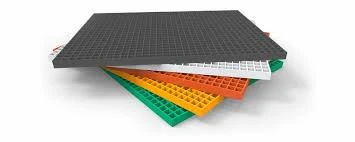
-
 Afrikaans
Afrikaans -
 Albanian
Albanian -
 Amharic
Amharic -
 Arabic
Arabic -
 Armenian
Armenian -
 Azerbaijani
Azerbaijani -
 Basque
Basque -
 Belarusian
Belarusian -
 Bengali
Bengali -
 Bosnian
Bosnian -
 Bulgarian
Bulgarian -
 Catalan
Catalan -
 Cebuano
Cebuano -
 China
China -
 China (Taiwan)
China (Taiwan) -
 Corsican
Corsican -
 Croatian
Croatian -
 Czech
Czech -
 Danish
Danish -
 Dutch
Dutch -
 English
English -
 Esperanto
Esperanto -
 Estonian
Estonian -
 Finnish
Finnish -
 French
French -
 Frisian
Frisian -
 Galician
Galician -
 Georgian
Georgian -
 German
German -
 Greek
Greek -
 Gujarati
Gujarati -
 Haitian Creole
Haitian Creole -
 hausa
hausa -
 hawaiian
hawaiian -
 Hebrew
Hebrew -
 Hindi
Hindi -
 Miao
Miao -
 Hungarian
Hungarian -
 Icelandic
Icelandic -
 igbo
igbo -
 Indonesian
Indonesian -
 irish
irish -
 Italian
Italian -
 Japanese
Japanese -
 Javanese
Javanese -
 Kannada
Kannada -
 kazakh
kazakh -
 Khmer
Khmer -
 Rwandese
Rwandese -
 Korean
Korean -
 Kurdish
Kurdish -
 Kyrgyz
Kyrgyz -
 Lao
Lao -
 Latin
Latin -
 Latvian
Latvian -
 Lithuanian
Lithuanian -
 Luxembourgish
Luxembourgish -
 Macedonian
Macedonian -
 Malgashi
Malgashi -
 Malay
Malay -
 Malayalam
Malayalam -
 Maltese
Maltese -
 Maori
Maori -
 Marathi
Marathi -
 Mongolian
Mongolian -
 Myanmar
Myanmar -
 Nepali
Nepali -
 Norwegian
Norwegian -
 Norwegian
Norwegian -
 Occitan
Occitan -
 Pashto
Pashto -
 Persian
Persian -
 Polish
Polish -
 Portuguese
Portuguese -
 Punjabi
Punjabi -
 Romanian
Romanian -
 Russian
Russian -
 Samoan
Samoan -
 Scottish Gaelic
Scottish Gaelic -
 Serbian
Serbian -
 Sesotho
Sesotho -
 Shona
Shona -
 Sindhi
Sindhi -
 Sinhala
Sinhala -
 Slovak
Slovak -
 Slovenian
Slovenian -
 Somali
Somali -
 Spanish
Spanish -
 Sundanese
Sundanese -
 Swahili
Swahili -
 Swedish
Swedish -
 Tagalog
Tagalog -
 Tajik
Tajik -
 Tamil
Tamil -
 Tatar
Tatar -
 Telugu
Telugu -
 Thai
Thai -
 Turkish
Turkish -
 Turkmen
Turkmen -
 Ukrainian
Ukrainian -
 Urdu
Urdu -
 Uighur
Uighur -
 Uzbek
Uzbek -
 Vietnamese
Vietnamese -
 Welsh
Welsh -
 Bantu
Bantu -
 Yiddish
Yiddish -
 Yoruba
Yoruba -
 Zulu
Zulu
FRP Flange Blind Specifications and Applications for Industrial Use
Understanding FRP Flange Blind A Comprehensive Guide
In industrial applications, ensuring the integrity and safety of piping systems is paramount. One such component that plays a critical role in this aspect is the FRP (Fiberglass Reinforced Plastics) flange blind. This article will delve into what FRP flange blinds are, their applications, benefits, and considerations for their use.
What is an FRP Flange Blind?
An FRP flange blind is a type of flange that is used to seal a piping system, preventing the flow of liquid or gas. Made from fiberglass reinforced plastic, these blinds are designed to withstand various environmental conditions while providing a lightweight yet strong alternative to traditional metal flanges. FRP materials are known for their superior corrosion resistance, making them suitable for applications in chemical plants, waste treatment facilities, and other environments where exposure to harsh substances is common.
Applications of FRP Flange Blinds
FRP flange blinds are versatile components used across various industries. Some of the most common applications include
2. Wastewater Treatment Plants In environments that deal with aggressive waste materials, these blinds provide effective sealing solutions, preventing leaks and ensuring that harmful substances do not escape.
3. Oil and Gas Industries The oil and gas sector benefits from FRP flange blinds as they help maintain safety and efficiency in piping systems that transport various fluids under high pressure.
4. Food and Beverage Industry The non-reactive nature of FRP materials makes them suitable for use in food processing, ensuring that no contaminants leach into food products.
Benefits of FRP Flange Blinds
The adoption of FRP flange blinds offers several notable advantages
1. frp flange blind

- Corrosion Resistance One of the most significant benefits of FRP is its resistance to corrosion caused by chemicals and environmental factors. This property extends the lifespan of piping systems and reduces maintenance costs.
- Lightweight Compared to traditional metal flanges, FRP flanges are much lighter, making them easier to handle and install. This feature reduces labor costs and enhances safety during installation.
- Low Thermal Conductivity FRP materials typically have low thermal conductivity, which can be beneficial in applications where temperature variations are a concern.
- Cost-Effectiveness While the upfront cost of FRP materials can be higher than some metals, the longevity and reduced maintenance requirements often result in lower total lifecycle costs.
Considerations for Using FRP Flange Blinds
While FRP flange blinds offer various benefits, there are certain considerations to keep in mind
- Temperature Limitations FRP materials may have limitations concerning the temperature range in which they can operate efficiently. It is crucial to verify that the chosen FRP flange blind is suitable for the specific temperature conditions of the application.
- Proper Installation Ensuring that FRP flange blinds are installed correctly is essential for maintaining their integrity and effectiveness. Improper installation can lead to leaks and failures over time.
- Compatibility with Fluids Not all FRP materials are compatible with every fluid. Care must be taken to select the right type of FRP for the specific chemicals and conditions prevalent in the application.
Conclusion
FRP flange blinds present a robust and reliable solution for sealing piping systems across various industries. Their corrosion resistance, lightweight nature, and cost-effectiveness make them an attractive option for many applications. However, it is essential to consider the specific requirements and limitations associated with FRP materials to ensure optimal performance. As industries increasingly prioritize safety and efficiency, the role of FRP flange blinds will undoubtedly continue to expand in the infrastructure of modern piping systems.
Latest news
-
Exploring the Benefits of Top Hammer Drifter Rods for Enhanced Drilling PerformanceNewsJun.10,2025
-
High-Precision Fiberglass Winding Machine for GRP/FRP Pipe Production – Reliable & Efficient SolutionsNewsJun.10,2025
-
FRP Pipes & Fittings for Shipbuilding - Corrosion-Resistant & LightweightNewsJun.09,2025
-
Premium FRP Flooring Solutions Durable & Slip-ResistantNewsJun.09,2025
-
Premium Fiberglass Rectangular Tanks Durable & Lightweight SolutionNewsJun.09,2025
-
Tapered Drill String Design Guide Durable Performance & UsesNewsJun.09,2025









